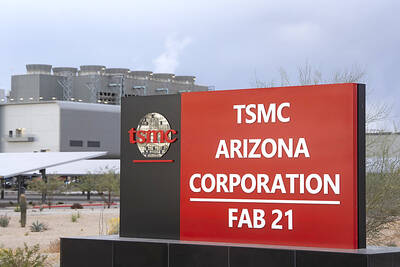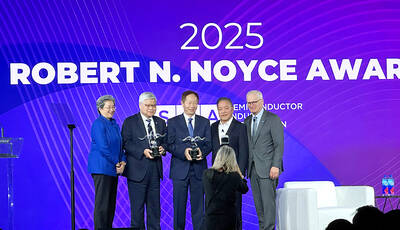The yen and the US dollar posted annual gains versus the euro as the first simultaneous recessions in the US, Europe and Japan since World War II encouraged investors to take refuge in the currencies.
The US dollar fell the most against the yen in more than 20 years last year on speculation the Federal Reserve’s zero interest rate would undermine demand for the greenback. The euro recorded its biggest rally against the pound since its 1999 debut, trading within 5 pence of parity on speculation the recession in the UK will deepen.
“It was a year of deleveraging, a year of dollar demand caused by uncertainty and a reversion to yen strength,” said Matthew Kassel, director of proprietary trading at ING Financial Markets in New York.
The US dollar dropped 19 percent to ¥90.86 yesterday from ¥111.75 at the end of 2007, the biggest decline since 1987. It gained 4.5 percent to US$1.3966 per euro from US$1.4057, the first increase in three years. It touched US$1.6038 on July 15, the weakest level ever. Europe’s currency decreased 22 percent to ¥126.82 from ¥163.04.
The rand was the worst performer against the US dollar last year among major currencies tracked by Bloomberg, weakening 27 percent to 9.4375 as commodity prices fell and investors pulled money from higher-yielding assets.
The euro gained 30 percent to 95.80 versus the pound last year, the most since its inception, and reached a record high of 98.03 pence on Dec. 30. The Bank of England reduced its benchmark interest rate by 3.5 percentage points to 2 percent to limit the fallout from the global financial crisis.
The yen gained versus all of the major currencies last year, strengthening 52 percent to ¥64.15 against the Australian dollar and 61 percent to ¥53.18 versus New Zealand’s currency as US$1 trillion in credit-market losses encouraged investors to unwind carry trades, in which they get funds in a country with low borrowing costs and buy assets where returns are higher.
Japan’s target lending rate of 0.1 percent compares with 4.25 percent in Australia and 5 percent in New Zealand.
The yen’s gains versus the US dollar undermined overseas sales for exporters including Toyota Motor Corp, Honda Motor Co and Sony Corp. Japan’s overseas sales declined a record 27 percent in November from a year earlier, Japan’s Finance Ministry said last month.
“Japanese authorities are very concerned about their industrial sector, and moving through 90 on a sustained basis will be very tough for them to tolerate,” said Robert Sinche, head of global currency strategy at Bank of America Corp in New York, in an interview on Bloomberg Television. “It will be difficult to get actual intervention unless we get another pretty hard shot down below 90.”
The US dollar may strengthen to US$1.25 per euro and trade at ¥90 at the end of the first quarter, according to median estimates of analysts in a Bloomberg News survey.
The Australian and New Zealand dollars posted their biggest annual declines against the US dollar since starting to trade freely.
The currencies last year reached their highest level against the US dollar in more than 20 years before sliding in tandem with commodities, which account for more than half the countries’ exports. The Aussie dollar dropped 19 percent last year to US$0.71, while New Zealand’s fell 24 percent to US$0.58.
Canada’s dollar also posted a record decline against the US currency last year, falling 20 percent to C$1.2185 from near parity with the greenback.

Shiina Ito has had fewer Chinese customers at her Tokyo jewelry shop since Beijing issued a travel warning in the wake of a diplomatic spat, but she said she was not concerned. A souring of Tokyo-Beijing relations this month, following remarks by Japanese Prime Minister Sanae Takaichi about Taiwan, has fueled concerns about the impact on the ritzy boutiques, noodle joints and hotels where holidaymakers spend their cash. However, businesses in Tokyo largely shrugged off any anxiety. “Since there are fewer Chinese customers, it’s become a bit easier for Japanese shoppers to visit, so our sales haven’t really dropped,” Ito

The number of Taiwanese working in the US rose to a record high of 137,000 last year, driven largely by Taiwan Semiconductor Manufacturing Co’s (TSMC, 台積電) rapid overseas expansion, according to government data released yesterday. A total of 666,000 Taiwanese nationals were employed abroad last year, an increase of 45,000 from 2023 and the highest level since the COVID-19 pandemic, data from the Directorate-General of Budget, Accounting and Statistics (DGBAS) showed. Overseas employment had steadily increased between 2009 and 2019, peaking at 739,000, before plunging to 319,000 in 2021 amid US-China trade tensions, global supply chain shifts, reshoring by Taiwanese companies and

Taiwan Semiconductor Manufacturing Co (TSMC, 台積電) received about NT$147 billion (US$4.71 billion) in subsidies from the US, Japanese, German and Chinese governments over the past two years for its global expansion. Financial data compiled by the world’s largest contract chipmaker showed the company secured NT$4.77 billion in subsidies from the governments in the third quarter, bringing the total for the first three quarters of the year to about NT$71.9 billion. Along with the NT$75.16 billion in financial aid TSMC received last year, the chipmaker obtained NT$147 billion in subsidies in almost two years, the data showed. The subsidies received by its subsidiaries —

Taiwan Semiconductor Manufacturing Co (TSMC) Chairman C.C. Wei (魏哲家) and the company’s former chairman, Mark Liu (劉德音), both received the Robert N. Noyce Award -- the semiconductor industry’s highest honor -- in San Jose, California, on Thursday (local time). Speaking at the award event, Liu, who retired last year, expressed gratitude to his wife, his dissertation advisor at the University of California, Berkeley, his supervisors at AT&T Bell Laboratories -- where he worked on optical fiber communication systems before joining TSMC, TSMC partners, and industry colleagues. Liu said that working alongside TSMC